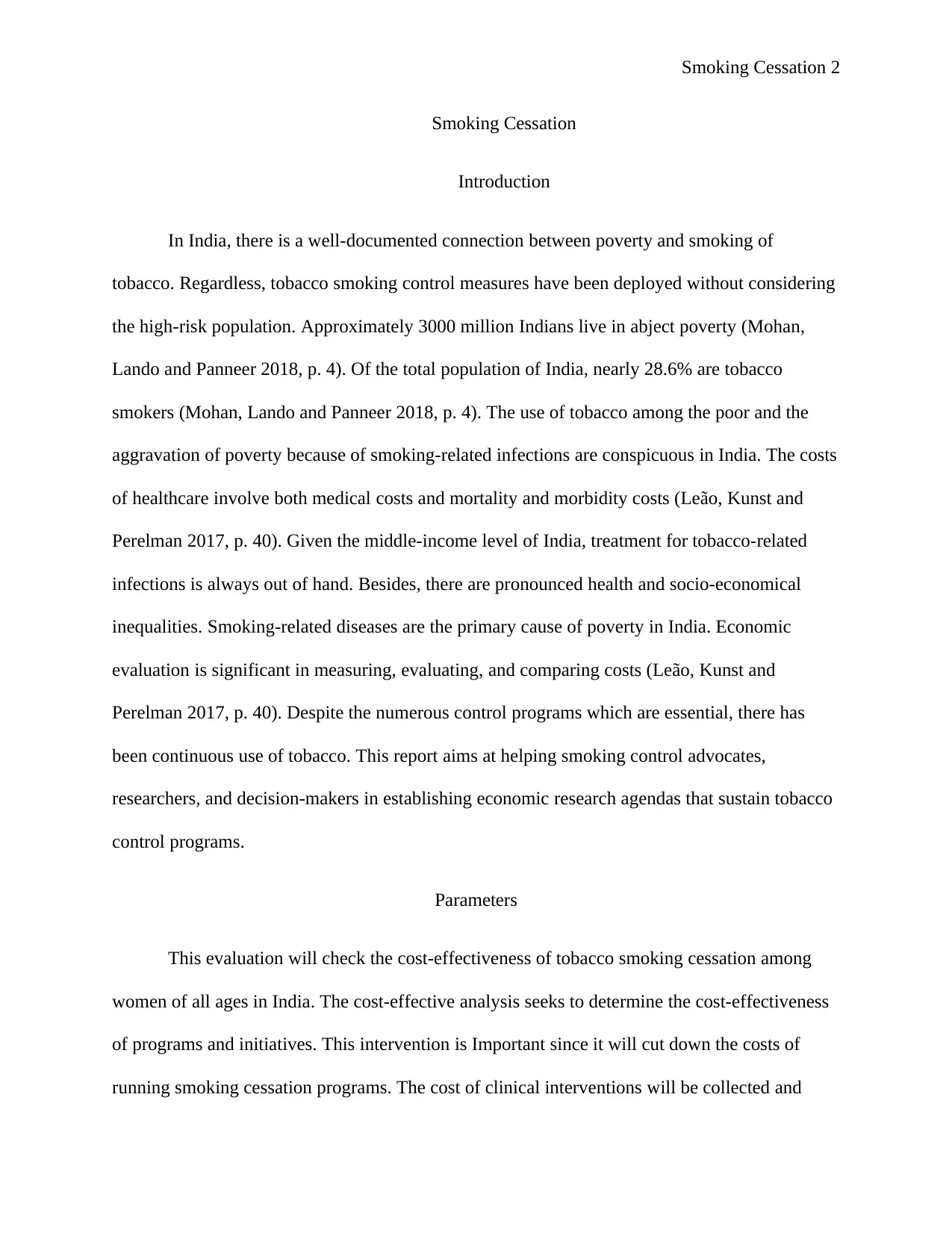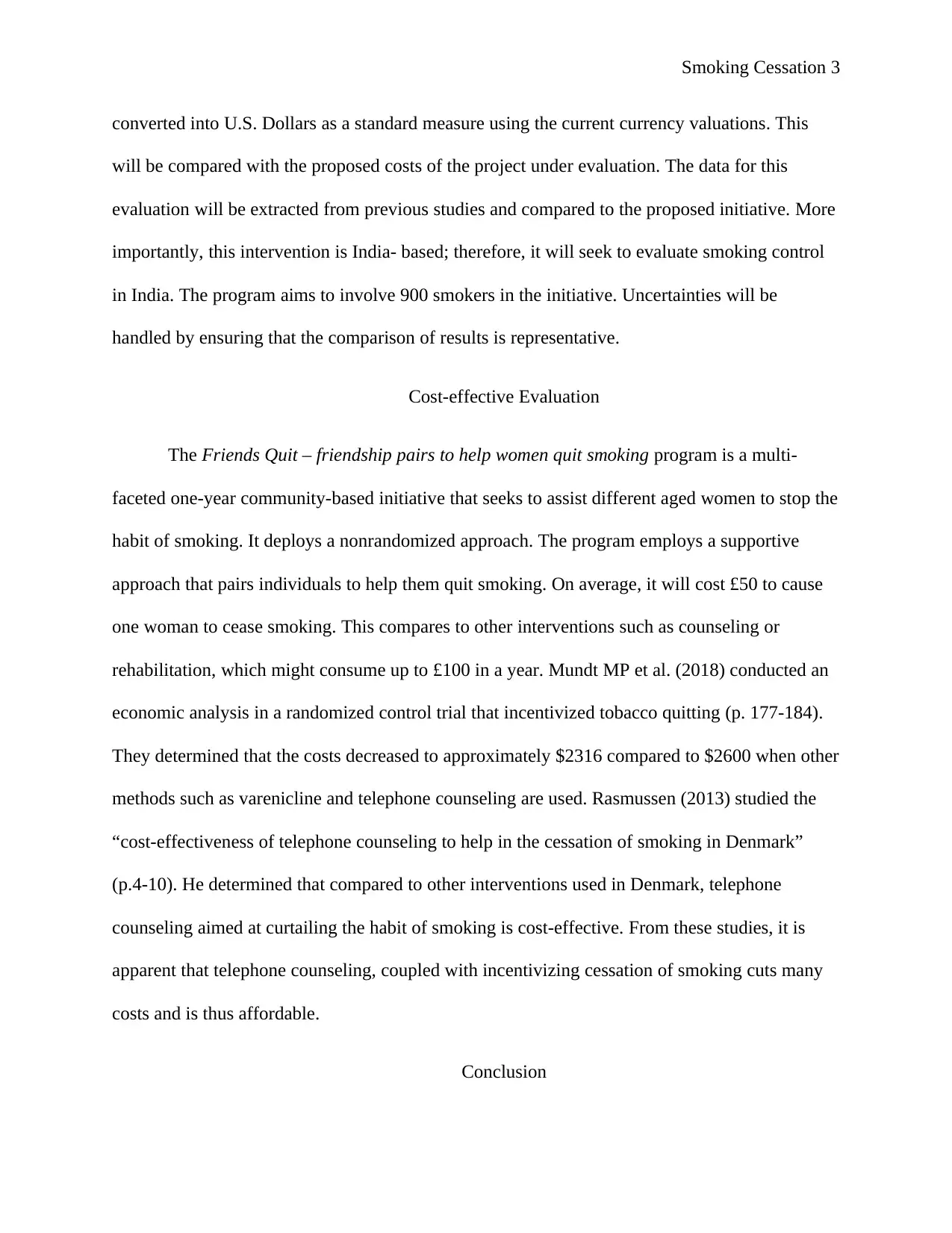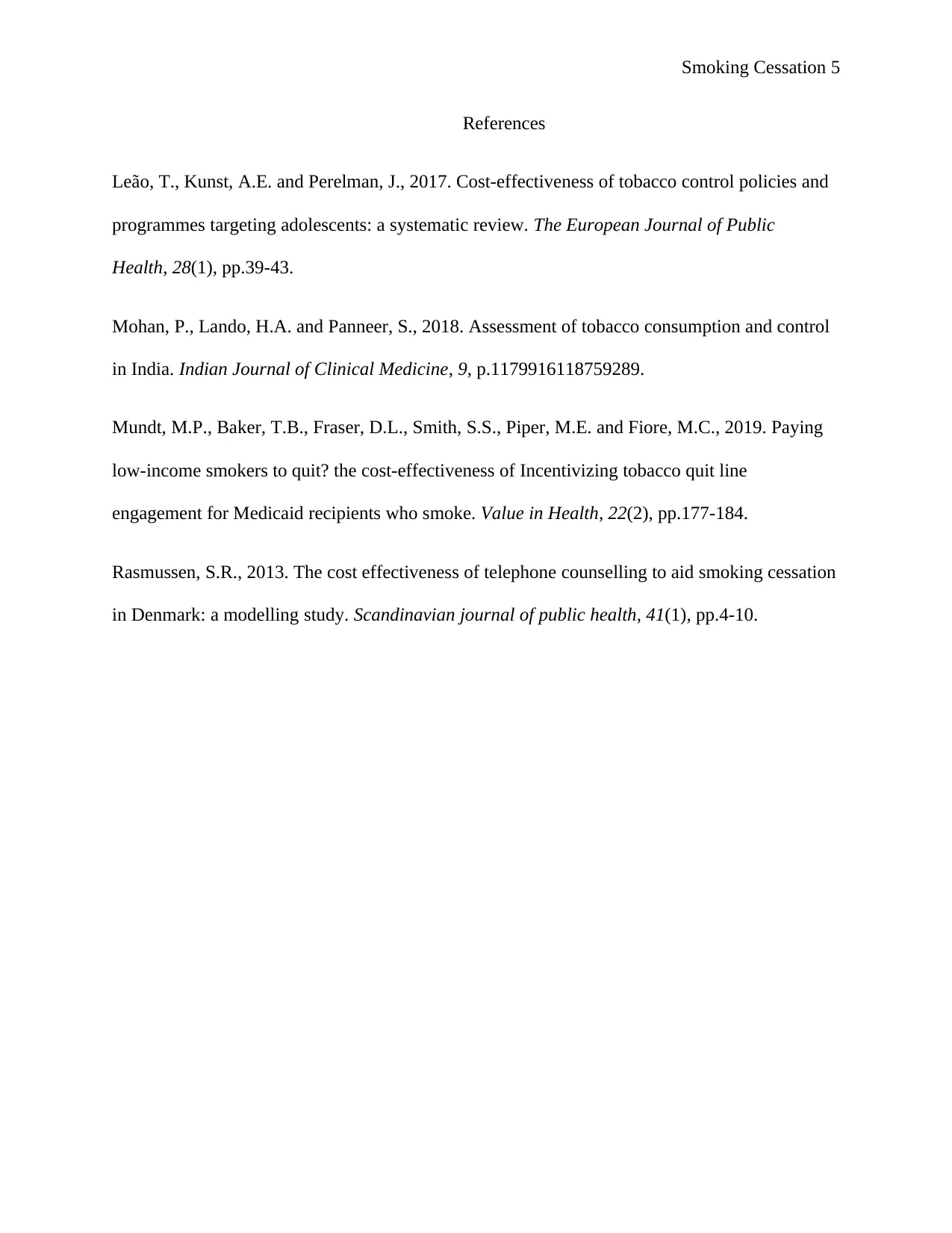Economic Evaluation Report: 'Friends Quit' Smoking Cessation Program
VerifiedAdded on 2022/10/06
|5
|843
|3
Report
AI Summary
This report presents an economic evaluation of the 'Friends Quit' smoking cessation program, specifically focusing on its cost-effectiveness in India. The evaluation considers the high prevalence of tobacco use among the impoverished population and the associated healthcare costs. The report outlines the parameters of the evaluation, including the target population (women of all ages), the intervention's design (friendship pairs), and the comparison of costs with other cessation methods like counseling. It analyzes data from previous studies, such as the cost-effectiveness of incentivized quitting and telephone counseling, to support the conclusion that the 'Friends Quit' program offers a cost-effective approach to smoking cessation. The report emphasizes the importance of economic research agendas to sustain tobacco control programs and highlights the potential for reducing healthcare costs through this intervention. The evaluation framework includes a cost-effectiveness analysis, the collection and valuation of clinical intervention costs in U.S. Dollars, and the handling of uncertainties to ensure representative results. The report concludes that the 'Friends Quit' program is a more cost-effective method compared to other interventions.
1 out of 5






![[object Object]](/_next/static/media/star-bottom.7253800d.svg)